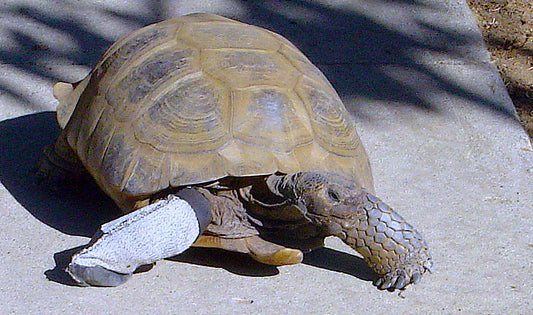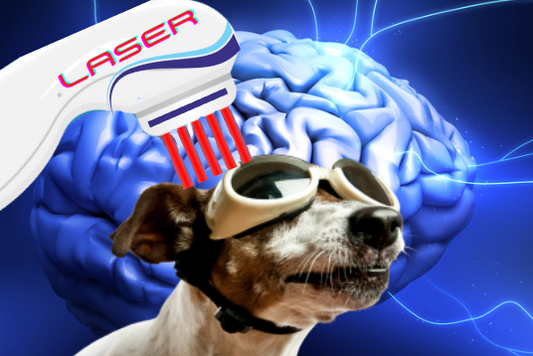Dosing Advances in Photobiomodulation (laser therapy).
Gaining a better understanding of the advancements in photobiomodulation can help you maximize the benefits of this technology in a veterinary clinic setting.
The positive effects of photobiomodulation therapy (PBM; formerly low level laser therapy, or LLLT) were originally observed in a rodent model more than 60 years ago by Dr. Endre Mester when he noted the effects this application of light had on hair growth and wound healing. Since that time, further research has expanded our understanding of PBM and the particulars of “dosing light” for a variety of conditions, not just in cell culture but extrapolated to take into account light-tissue interactions in living beings. With this expanded understanding we may better utilize this exciting technology in veterinary medicine to treat our patients, particularly those with pain or conditions mediated by inflammation.
The PBM-cellular relationship
Many scientific studies have been conducted in vitro to characterize the amount of light needed to create a response on a cellular level. The challenge, from a physics standpoint, has always been being able to target tissues in vivo at depth. The “right” amount of energy needs to reach the specific “target” tissue in order to have an effect – whether that is nervous tissue, bone, other soft tissue structures, etc. Cells and tissues can be directly stimulated by and become responsive to PBM in this way. However, it has also become clear that some cells are “bystanders” in this process, benefitting based on their proximity to their neighbors in the tissues, or only after other cells, stimulated by PBM, produce the requisite growth factors or substrates necessary to jumpstart their cellular machinery. But what are the “right” parameters?
Defining the parameters
When clinically we began treating patients with PBM years ago, parameters taken from cell culture studies were used. While these often resulted in positive clinical outcomes for things like wound healing or superficial dermatologic lesions, results were often inconsistent for deeper tissue conditions. Recognizing that inconsistent or negative results may have been due to underdosing in vivo due to the way that light and tissues interact (especially as regards light losses) led to research and clinical treatment advancements that have benefitted veterinary and human patients alike. The wide range of factors that contribute to positive or negative outcomes for various conditions in vivo include things like the types and thickness of the tissue being treated, the wavelength(s) of light being used, the total amount of energy delivered and the time course over which that delivery takes place. More recent research has also elucidated that it is not just the total amount of energy that is important, but also the energy density, or fluence (measured in J/cm2) applied to the tissue as well as the power density (irradiance, or W/cm2) at which the light is applied to the tissues. It should be noted, that published studies using PBM often do not report, or inaccurately report, the parameters listed above and therefore a closer examination of the dosimetry used in a study should be undertaken before drawing conclusions about the relevance of the results.
Technological advancements: learning to adapt
To address some of the dosing considerations mentioned, the use of advanced laser devices utilizing higher power and specialized software that take coat length, coat color, skin color as well as body type into account may allow clinicians to safely apply more intense doses of light at the skin surface. This not only allows them to achieve adequate total doses of light for deep tissue conditions (such as pain) but also allows treatment within a more efficient time frame compared to older, lower power laser devices. Additionally, automatic protocols, written by manufacturers should take into account the latest research when designing treatments for various conditions. All laser users should have a comprehensive understanding of how to safely and effectively adjust doses for their patients as individuals, understanding that automatic protocols may serve as a general guide and that questions should be asked of laser manufacturers regarding protocol design and dosimetry as well as best practices for application (on vs. off-contact application).
It is necessary to take all of these variables into consideration and to understand their importance when determining why a treatment may or may not have been successful or why there may be variability between published study results and our own clinical outcomes. The use of larger beams of light or specialized real-time feedback in software are emerging as strategies that aid in the delivery of the desired amounts of light energy to the desired target tissues. Careful attention to parameters is important. Despite our desire to simplify, there is no singular simple answer for light dosing and tissue penetration to achieve optimal outcomes for PBM. Through further research and the continued advancement of PBM devices, we will only continue to advance patient care in veterinary medicine.
Author: Lisa Miller, DVM, CCRT
Link: Dosing Advances in Photobiomodulation (laser therapy)
References
- Mester, B. Szende, and P. Gartner, “The effect of laser beams on the growth of hair in mice,” Radiobiol. Radiother. (Berl) 9(5), 621–626 (1968).
- Lanzafame, “Light Dosing and Tissue Penetration: It Is Complicated.” Photobiomodulation, Photomedicine, and Laser Surgery. 38(7), 393-394 (2020).
- Anders, H. Moges, X. Wu, et al., “In vitro and in vivo optimization of infrared laser treatment for injured peripheral nerves.” Lasers Surg Med. 46(1), 34-45 (2014).
- Zein, W. Selting, M. Hamblin, “Review of light parameters and photobiomodulation efficacy: dive into complexity” J. Biomed. Opt. 23(12), 120901 (2018).
- Lanzafame, “Photobiomodulation, tissue effects and bystanders.” Photomed Laser Surg. 29:519–520 (2011).





